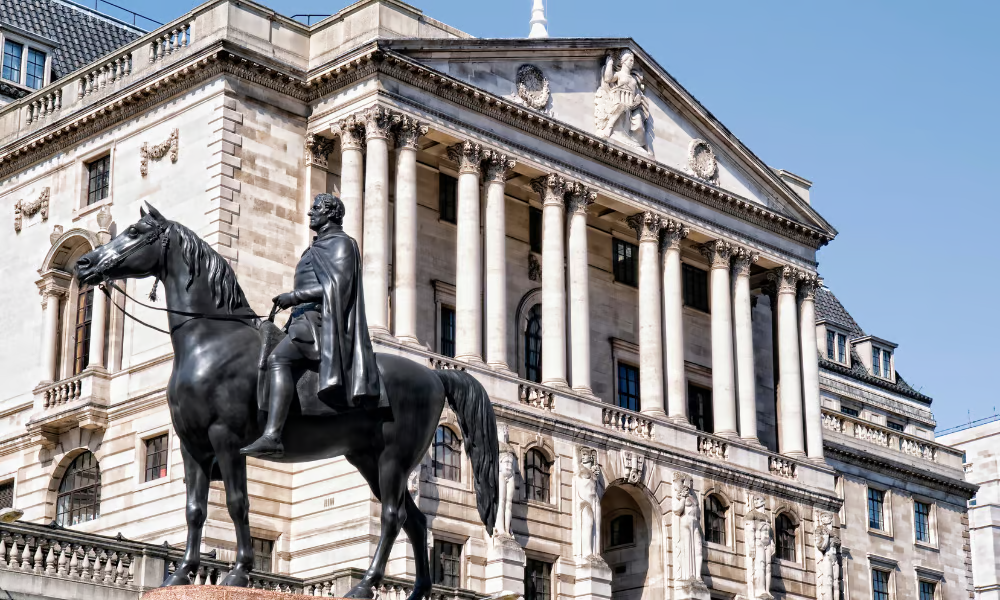Hawkish rate setter spells out why she voted for 0.5% rather than 0.25% - and why we shouldn't panic over inflation

When rates were cut last week by the Bank of England, it was no great surprise – as we reported just before it happened, a rate cut was ‘a certainty’ according to economists. But what WAS at issue was just how big any interest rate cut might have been.
When the cut did happen, it was ‘only’ 0.25%, but as we reported at the time – two rate setters voted for a larger cut. One of those leading members of the Bank of England’s Monetary Policy Committee (MPC) has defended her call for a significant interest rate cut, arguing that bold action was necessary to stabilise the economy.
Catherine Mann, a long-time advocate for tighter monetary policy, surprised analysts last week by voting for a 50-basis-point reduction in the base rate, double the 25-basis-point cut that was ultimately approved by the MPC.
Speaking at Leeds Beckett University today, Mann explained her reasoning behind the more aggressive approach, stating that she aimed to "cut through the noise" surrounding the economic outlook. She acknowledged concerns about inflation but emphasised that the expected price increases this year - largely driven by energy, food, and regulated costs like water and insurance - were temporary factors beyond the Bank's control. "In a speech last February, I said, 'Do not be seduced by the deceleration in headline inflation'. This February, I say, 'Do not be dismayed by the hump… yet'," she told the audience.
Read more: Bank of England hawk says she will cut rates aggressively – if the conditions are right
Mann’s position marks a shift from her previously hawkish stance, where she had consistently pushed for higher rates to combat inflationary pressures. Until recently, she had been viewed as one of the strongest advocates for keeping borrowing costs elevated to prevent price instability. However, she now argues that the economy faces growing risks from weak employment and slowing business activity, warranting a more proactive approach.
Last week's rate decision saw the MPC vote 7-2 in favour of a more modest 25-basis-point cut, bringing the base rate down to 4.5%. The move followed two previous cuts of the same magnitude since August. However, Mann and fellow MPC member Swati Dhingra dissented, advocating for a sharper reduction to accelerate financial relief.
The Bank’s latest forecasts project the UK economy to grow by just 0.75% in 2025, a downgrade from the previously expected 1.5%. Inflation, currently at 2.5%, is predicted to peak at 3.7% in the summer before gradually declining. While some economists argue that the Bank should adopt a cautious approach given these projections, Mann contends that immediate, decisive action is needed to prevent prolonged stagnation.
Her remarks also touched on concerns surrounding the labour market. "Already, the labour market has all but stopped adding jobs, with employment nearly flat," she warned. She pointed to the upcoming £25 billion rise in employers’ national insurance contributions as a potential trigger for job losses, particularly among smaller businesses.
Read more: We must keep interest rates high says Bank of England policymaker
Despite her push for a steeper rate cut, Mann maintains that interest rates will need to stay relatively high over the long term. She suggested that the Bank’s neutral rate - the level that neither stimulates nor constrains the economy - should be around 3.5%, notably higher than the 2.25% estimate from 2018.
The financial markets responded cautiously to her comments, with the pound remaining flat against the dollar at $1.236, while the FTSE 100 saw a slight dip of 0.02%. The MPC is set to meet again on March 20, with expectations of further rate adjustments depending on economic data and inflation trends.
Read more: Mortgage rates to be cut by another 0.67%
While Mann’s stance has sparked debate within the financial sector, her core message remains clear: short-term boldness in monetary policy is necessary to ensure long-term stability.
Whether the Bank of England follows her lead in the coming months remains to be seen. Financial markets think more rate cutting is on the way. Last Thursday’s decision led investors to anticipate at least two more cuts this year, with market pricing indicating a greater than 60% likelihood of a third.



